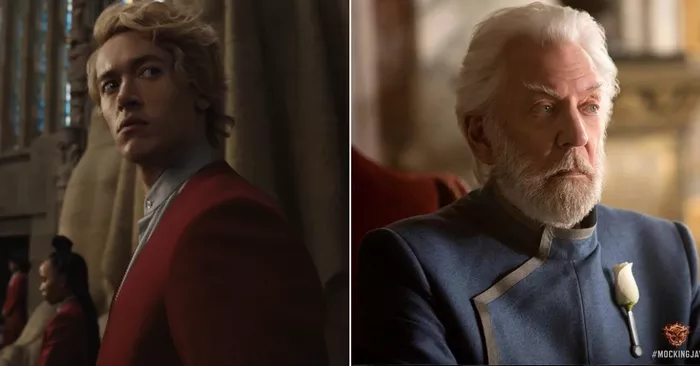The Hunger Games franchise, known for its dystopian narrative and compelling characters, took a daring turn with the prequel, “The Ballad of Songbirds & Snakes.” One of the most striking elements of the film is the dark and foreboding ending that unveils the transformation of Coriolanus Snow into the formidable antagonist seen in the main series. In a recent revelation, director Francis Lawrence provides insight into the intricacies of Snow’s descent into darkness, particularly emphasizing the pivotal forest scene that serves as the catalyst for his rise to power in the Capitol.
The Culmination of Transformation: Coriolanus Snow’s Dark Ending
The conclusion of “The Ballad of Songbirds & Snakes” leaves audiences with a chilling glimpse into the genesis of Coriolanus Snow’s ruthless persona. The transformation of a once seemingly sympathetic character into the oppressive President Snow is a narrative arc that captivated fans. Director Francis Lawrence sheds light on the meticulous crafting of Snow’s dark ending, unraveling the layers of complexity that contribute to the character’s evolution.
Symbolism in the Forest: Snow’s Descent into Darkness
The forest scene, where Coriolanus Snow experiences a profound breakdown, stands out as a symbolic turning point in the character’s journey. This pivotal moment in the movie represents Snow’s descent into darkness, a metaphorical plunge into the abyss that foreshadows the ruthless leader he will become. The symbolism embedded in the forest scene adds depth to Snow’s character, illustrating the internal conflict and moral erosion that pave the way for his future actions in the Capitol.
Setting the Stage for Capitol Dominance: Snow’s Rise to Power
Francis Lawrence underlines the significance of Snow’s breakdown in the forest as the catalyst for his subsequent rise to power in the Capitol. The carefully orchestrated sequence not only serves as a crucial plot point but also lays the groundwork for the oppressive regime that defines the main Hunger Games series. Snow’s transformation from a conflicted young man to a calculating and power-hungry leader is intricately connected to the emotional intensity of the forest scene, setting the stage for the Capitol’s dominance over the districts.
Director’s Favorite: Tom Blyth’s Performance and Emotional Journey
As the mastermind behind the visual storytelling, director Francis Lawrence singles out the forest sequence as his favorite in the movie. Central to the success of this pivotal moment is Tom Blyth’s portrayal of Coriolanus Snow. The director commends Blyth’s performance for bringing depth and authenticity to the character, capturing the emotional journey that defines Snow’s transformation. Blyth’s ability to convey the internal turmoil and moral unraveling aligns seamlessly with Lawrence’s vision for the film, making the forest scene a standout moment in the narrative.
Visualizing Darkness: The Artistry of Snow’s Descent
The success of Coriolanus Snow’s dark ending lies not only in the narrative intricacies but also in the visual artistry employed by the filmmaking team. Director Francis Lawrence, known for his keen eye for impactful visuals, orchestrates a cinematic experience that immerses viewers in the emotional and psychological depths of Snow’s descent. The careful interplay of lighting, cinematography, and Tom Blyth’s performance contributes to the atmospheric intensity of the forest scene, leaving a lasting impression on audiences.
Conclusion: Unveiling the Layers of Coriolanus Snow’s Transformation
The dark ending of “The Ballad of Songbirds & Snakes” stands as a testament to the storytelling prowess of the Hunger Games franchise. Director Francis Lawrence’s insights into the forest scene, Snow’s breakdown, and subsequent rise to power provide a nuanced understanding of the character’s evolution. Tom Blyth’s performance, coupled with Lawrence’s directorial vision, creates a cinematic journey that not only enriches the prequel but also enhances the overarching narrative of the Hunger Games series. As audiences delve into the layers of Coriolanus Snow’s transformation, the dark ending becomes a haunting exploration of the complexities that shape one of dystopian literature’s most formidable antagonists.

